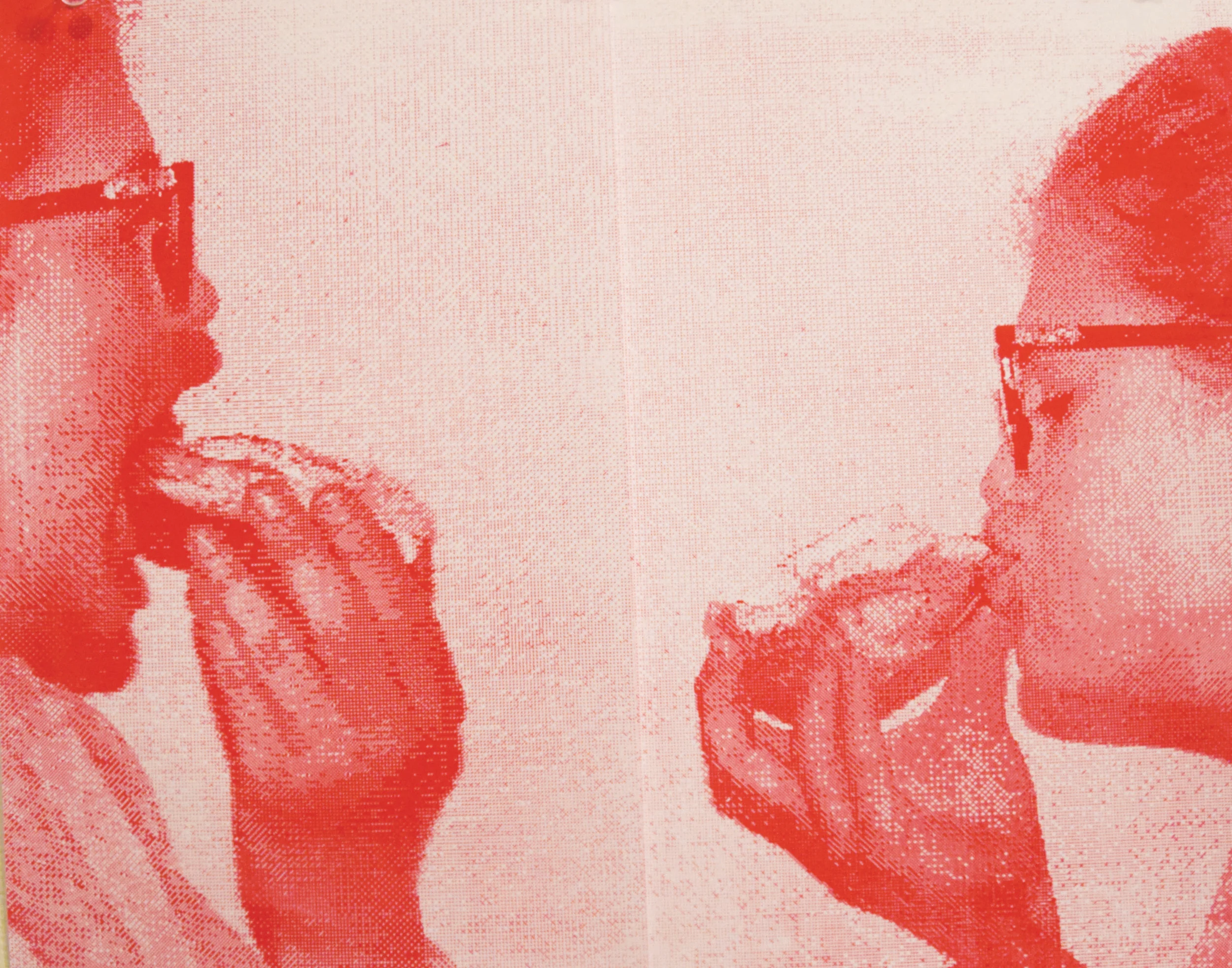Dear Reader,
These letters are intended to tie the issue together and connect our articles and art to the theme. Usually, they tend to begin with some kind of allegorical story or stretch metaphor. This time, however, it’s easy. Almost all of the articles in the Stranger issue fit perfectly with the theme, either in the “person I don’t know” sense of the word, the “this is weirder than that,” sense of the word, or both.
Some writers tackled social phenomena that bring strangers together in unusual, sometimes frightening, ways. Tucker Smith explains in plain English (finally!) what data mining is, and why we should be worried about our personal information ending up in the hands of powerful strangers. Kat Snoddy examines the concepts of consent and platonic intimacy in the professional cuddling industry, in which clients hire strangers for some snuggle time. Tia Vierling takes a look into the niche eBay market for used diaries—what should you do with a stranger’s most personal thoughts in your hands? And, with some difficulty, Callie Zucker persuaded a few pairs who have had one night stands with each other (intimate nights with a stranger) to get together again—for a Polaroid photo.
Others reflected on the meaning of the word “stranger” in their personal lives. Craig Carey shares the last few moments he spent with a friend who was about to transfer from CC. Carey examines the dynamics of being close to someone who’s a stranger to most of his peers. Lo Wall tells the moving story of how she woke up in the intensive care unit as a stranger to herself due to seizure-induced memory loss, and how she recovered (or rather reincarnated) her identity. And in perhaps one of the stranger articles I’ve personally had the pleasure to edit, Nate Goodman writes about a stranger he met in a strange place who showed him how strange he was himself.
If you, too, are starting to think the word “strange” is losing meaning because I’ve repeated it so many times, you’re right: honestly, our themes really don’t have much inherent meaning. The process we use to select the themes is not particularly selective or systematic. We get the entire staff together, tell everyone to think of words or phrases that are specific enough to inspire real-world associations yet vague enough to encompass a range of potential topics. Then we throw the list up on a whiteboard and proceed by process of elimination. This usually consists of everyone arguing about which themes they think are good or lame or funny or terrible until I feel like it’s the right time to tell everyone to close their eyes and vote.
When we first start working on the issue, rarely does it seem like the theme has any role in structuring the magazine’s contents, style, or feel. The theme is intended as inspiration (plug: you can definitely write an article for Cipher even if it doesn’t fit the theme), and sometimes it seems like the articles that end up in the issue really don’t fit the theme at all. But somehow, the theme always does seem to get worked into our personal lives.
For example, the theme of the first issue of Cipher last year was the “Ego” issue. We thought this would spark ideas for articles about the self, self-worth, and people with inflated senses of self-worth. While we did end up publishing such pieces, we really learned more about our own egos—as former Editor-in-Chief Ethan Cutler put it, in that letter from the editor, the “seemingly infinite ego clashes” that writers and editors face when trying to work collaboratively on a piece. Last year, Ethan and our staff worked hard to improve the quality of the writing and the professionalism of the magazine. We held our editors, artists, and writers to higher standards than Cipher previously had. The work we did was worth it, but it involved “infinite ego clashes” along the way.
This year, we hope to set a different tone. Almost everyone in our (almost entirely femme!) staff, save for Art Editor Caroline Li and myself, was hired at the end of last semester or the beginning of this semester. We started off as strangers to each other. Working on the Stranger issue, ironically, has brought us together. After all, how do you really get to know a stranger? You accept the strangest parts of them. When you edit someone else’s writing, you learn how to help that person put the strangest parts of their mind on paper. This year, we’re hoping the ego clashes wear off. We want to be more open to strangers, strangeness, and finding the strangest parts of ourselves—and give you some stranger content along the way.
Hopefully, the work inside these pages will help you, as a reader, learn a bit about the strangeness in the lives of our writers and artists, whether they be friends or strangers to you.
May you be strange forever,
Sara Fleming, Editor-in-Chief
